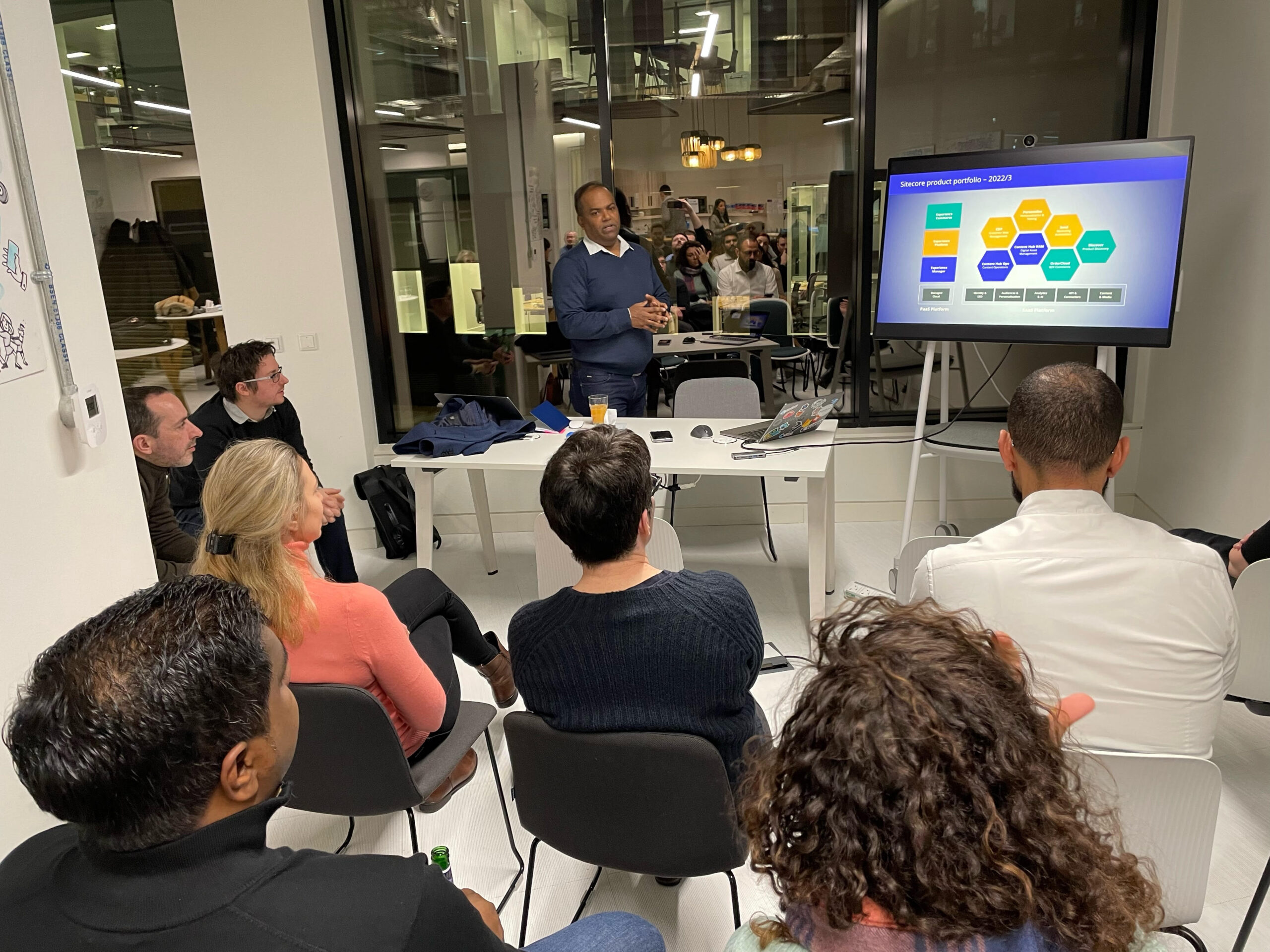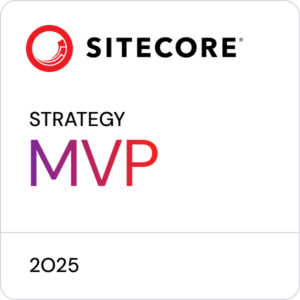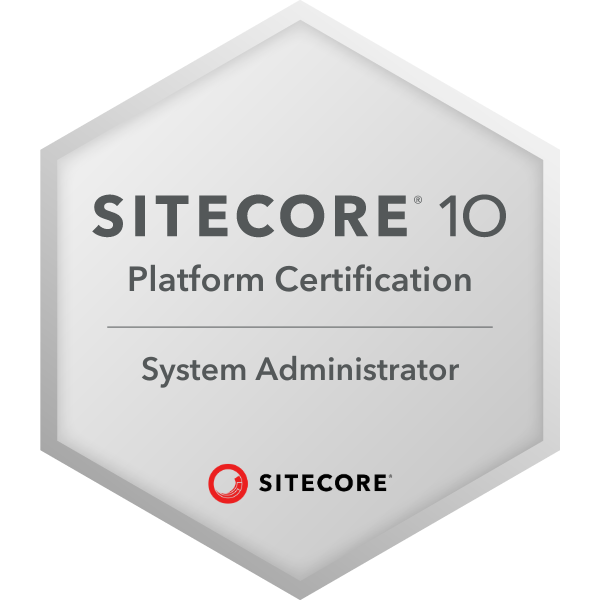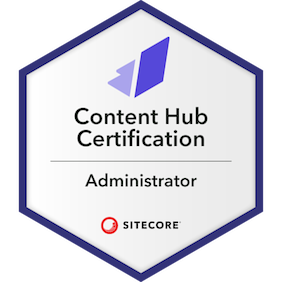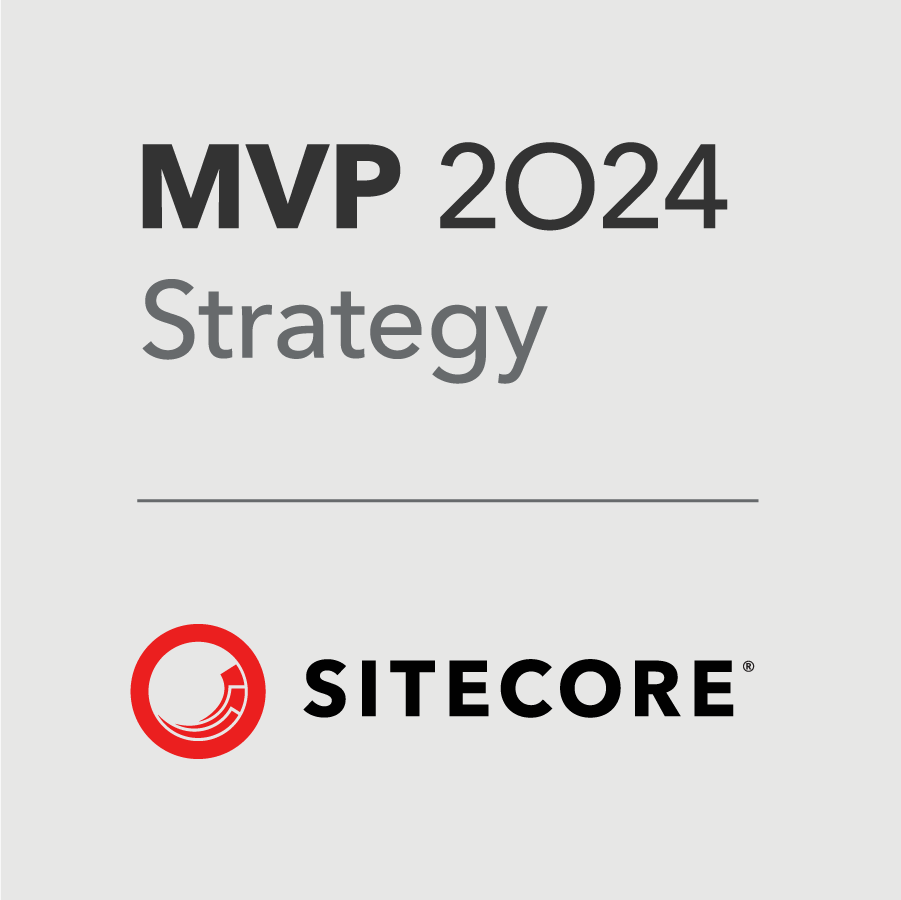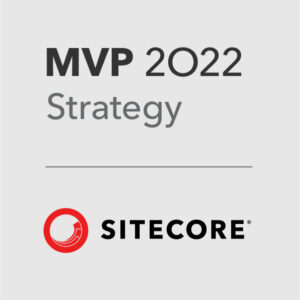Me and my fellow Sitecore Optimisation Consultancy (SOC) colleague, Christine Bookless, put together a helpful breakdown of the Sitecore Learning platform for the Remarkable Group in order to make everyone aware of the resources that are available and encourage more people to get stuck in and start learning more about Sitecore tools and how they are implemented.
Content modelling on Sitecore Content Hub ONE: best practices for brands
I wrote this article for the Sagittarius blog.
Managing and distributing digital content is one of the organisations’ most prominent challenges. Whether it’s across websites, emails, apps, point of sale, voice assistants, kiosks, wearables – the list goes on – the amount of channels that brands need to create and manage content for seems to be growing all the time.
With 70% of users accessing digital content across multiple devices, consistent and personalised content really matters.
Sitecore Content Hub ONE is a headless SaaS CMS that lets users manage content across multiple channels seamlessly. One of its core strengths is the flexibility it allows organisations to create scalable and reusable content no matter where it needs to be seen.
The Three Pillars of Sitecore Content Hub ONE
I wrote this article for the Sagittarius blog.
Content, content, content. Everywhere you look organisations are talking about content. How to create it. And how to get it in front of the people who matter.
Whether it’s on websites, emails, apps, point of sale, voice assistants, kiosks, you name it, we are swimming in the stuff.
But it’s never been harder to manage.
Getting your content to where it needs to be is one of the primary challenges of organisations today, especially considering the amount of different channels that are in play.
There are a whole bunch of tools out there that let marketers manage their content, but it’s all a bit of a minefield.
Content Hub ONE is a new tool from Sitecore, announced at Sitecore Symposium last October, that aims to make managing content a whole lot easier and give organisations more options with how to manage the content that they have.
First SUG UK event of the year
There were three fantastic sessions at this evening’s SUGUK meetup from Sumith Damodaran (Sitecore), James Darrall (Avanade), and Sarah O’Reilly (Sitecore). I have to say, I really enjoyed it.
This was the first SUG UK event of the year of what looks to be a packed schedule. Always great to catch up with the Sitecore community in London. I’m already looking forward to the next one!
- Unwrapping the new Engagement Cloud JS SDK – Sumith Damodaran
- Lessons Learned and Experience Gained Implementing Content Hub at Scale – James Darrall
- Leverage Sitecore Connect for Sitecore CDP – Sarah O’Reilly
I’m a 2023 Strategy MVP!
I’m delighted to make it two years in a row as a Sitecore Strategy MVP! Thanks to everyone at Sagittarius, especially Natalie Waite, Kingsley Hibbert, and Ian MacArthur, who make sure Sagittarius is one of the best Sitecore agencies in the world, and a massive congrats to Christine Bookless who got her first MVP award this year! 💪
My talk at SMAC Webinar #9
I was delighted to speak at the 9th SMAC webinar on 1st November about Sitecore CDP and Personalize alongside the fantastic Peter Clisby and Vaishali Dialani.
You can check it out below from 19m 20s.
Getting Started with Sitecore Personalize
I wrote this article for the Sagittarius blog.
Being able to show your customers relevant content is a must in today’s eCommerce environment. Not just because customers expect to be treated like individuals, but because showing them content and products that are relevant to them ultimately ends up improving your engagement and conversions in the long run too. It’s a win-win for everyone involved.
That’s why tools like Sitecore Personalize are so useful for brands who want to make a splash when a customer interacts with them on digital channels. But how can you get started?
When considering how to use a new tool it helps to understand the platform and the different elements you need to consider to get a proof of concept up and running.
So, what is Sitecore Personalize?
Well, it does exactly what it says on the tin – it lets you show personalised content to your customers, across channels – based on what you know about them or how they interact with your digital properties.
It’s important to make the distinction between the current Sitecore personalisation features that Sitecore XP offers. First off, Sitecore Personalize is a SaaS product – part of the composable suite of tools – and can be bought as a standalone product, as opposed to the traditional Sitecore personalisation features which are baked into XP.
Also, the type of personalised experiences that you can enable with Sitecore Personalize are a little more explicit with pop-ups and alert bars rather than the sometimes more subtle personalised components that you see being implemented in XP.
One of the really great features of Sitecore Personalize is the templates that you can set up so that marketers or strategists can manage things themselves without the need for a lot of development work. So it’s really a quite useful and exciting tool.
Important to know
Sitecore Personalize lets you set up Experiences (which are the personalised moments that can be shared with users based on certain rules) and Experiments (a way to test these Experiences).
Web Experiences render on the website itself as a user browses, and ‘Interactive’ Web Experiences are based on certain interactions on the website that are then rendered on the website, for example, a pop-up on the Homepage when a user adds a product to their Cart.
There are also ‘Full Stack’ Experiences which are API-based and can connect an Experience to other channels. ‘Triggered’ Full Stack Experiences happen when a specific Event has occurred, so something like an Abandoned Cart on the website can trigger an Email to the user with a discount to persuade them to complete a purchase.
Web Experiences are one of the most exciting and accessible elements of Sitecore Personalize and there are some important sections to consider when thinking about how it might work for your business.
The Who, What, Why, Where, and When of Sitecore Personalize
When you open the Sitecore CDP & Personalize dashboard, you are met with a number of sections in the left-hand sidebar including Customer data, Decisioning, and Experiments, but it’s Experiences that we’ll focus on right now, in particular, Web Experiences.
Web Experiences are made up of five components, some of which are optional, and these are Audience (the ‘Who’), Content (the ‘What’), Goals (the ‘Why’), Page Targeting (the ‘Where’), and Decisioning (the ‘When’).
Content
This is where we pick what we want to show to our visitors when some conditions are met. One of the really great features of Sitecore Personalize is that there are a bunch of pre-built templates which you can use to create Experiences. Things like a Pop-up takeover, an Alert Bar that appears at the top of the page, and a few different types of boxes and notifications are available.
Here we can put whatever content we want – we can talk about offers or discounts, or push recommended content, or prompts to sign-up to your newsletter etc. You can also make your own custom content here if you want to get a bit more creative and you can save templates for future use. All-in-all, it’s very easy to use and accessible, even for someone non-technical to get started.
Page Targeting
This is how you set where you want your Experience to appear. You can set it on one page in particular or on multiple pages. For example, you can set it on your Homepage if you want to make it widely seen, or on specific Category pages or Product pages depending on what the Offer or message is.
To select the page or pages – once the CDP and your website have been linked via API – it’s as simple as adding in the URL into the box in this section. There’s also some Advanced Targeting options if you want to use JavaScript to add a bit more complexity.
Audience
This is where we set who we want to see our personalised Experience based on what we know about the visitor, and this can be set in two ways.
One is from our customer database, which is the ‘Segments’ section in Sitecore Personalize, and here we can set our Experience to appear for any of the customers we have information for based on things like product preferences, purchase history, and demographic aspects like region, age, or gender etc. If we’re using Sitecore CDP as well as Sitecore Personalize this gives us a huge advantage in the level we can target Experiences to our visitors. Segment data is updated on a daily basis.
The other way we can target is by ‘Real Time Audience’ which is more circumstantial from the visitor perspective, and this can be based on the visitor’s country, the traffic source, the day of the week it is, whether it’s their first time on your site or if they’re a return visitor, or if they visited the site via a campaign tracking code.
Decisioning
Decisioning is a way for users to model and run decisions using business rules. Whereas the Audience section focuses on who the visitor is (based on what we know about them), the Decisioning section focuses on their behaviour on our site. When they meet certain criteria, we can show them an Experience. For example, if a visitor puts a product into their Cart and keeps browsing the site, you can give them a discount code to help them complete the purchase, or maybe recommend a complimentary product to them.
The Decisioning section lets you build Decision Models which tell Sitecore Personalize when to show an Experience to a visitor. Here there are three elements to consider:
- There’s the ‘Inputs’, which is how you want your Decisioning to start, either based on the Guest (who the visitor is), the Order (the products they’re interacting with), or the Session (what they’re doing on the site).
- Then, there’s the ‘Decisions’ themselves, the calculations behind what you want to happen. Here you have the Decision Tables and Templates, as well as the Programmables which let you use JavaScript in a decision.
- Then there are internal or external authorities where the information comes from, such as Knowledge Sources like an Offer Catalogue.
Together, these let you build out complex frameworks for when to show certain Experiences and Sitecore Personalize has a really nice, visual Decision Model builder to help you build out these frameworks.
Goals
Goals are how we measure how successful the Experiences that we are running are and there are three ways to measure this:
- Page View – This is by using a ‘Success’ URL, for example, a particular landing page or purchase confirmation page.
- Custom Events – This could be something like a button click or a brochure download.
- Revenue – You can link Revenue to Experiences (by Session or by Guest) to see how much revenue your Experiences played a role in generating.
Now go and get started!
So that’s a quick look at the Who, What, Why, Where, and When of Sitecore Personalize Web Experiences. Now all that’s left is to get started on thinking how you can go about using it for yourself. If you need any help in getting your business onto Sitecore Personalize, you know who to reach out to! Sagittarius are always here to help brands supercharge their personalisation capabilities on Sitecore.
Speaking at the Remarkable User Group Forum
I was delighted to speak about Sitecore Content Hub today at the latest Remarkable User Group Forum with some other great speakers including Christine Bookless and Matthew Dunn. Looking forward to the next one in January!
Check out my slides below and get in touch if you have any questions about Sitecore Content Hub. We are currently rolling out Content Hub for one of our clients and pitching it to others so it’s exciting times!
The 4 Steps to Personalising Content on your Sitecore Website
In 2022, consumers expect to be treated like an individual regardless of whether it is at their local cafe or corner shop, or on the online stores they visit.
According to McKinsey’s ‘Next in Personalization 2021’ Report, 76% of consumers get frustrated when companies don’t use personalisation.
Personalisation enables you to deliver targeted content to your visitors, helping customers find what they are looking for, as well as to discover relevant products or services that they might not have even known about.
The 5 Pillars of Sitecore Content Hub Explained
Unless you’ve been living in a cave for the last ten years or so, you’ve probably heard the term “Content is King” more times than you care to recall. It might be a well worn trope, but there is truth behind it.
These days, organisations face a huge challenge in managing their assets across channels, storing and organising content that is used across websites, social media, email, point of sale, packaging etc. This is a challenge that’s compounded when aiming to personalise content at scale.
Many organisations use a DAM, or Digital Asset Management solution, to manage all of their assets. But many DAMs are clumsy to use or don’t genuinely unlock the potential of the assets they store.
This is where Sitecore Content Hub comes in.
While many people might simply think of a DAM when they hear about Content Hub, it really is much more than that. A DAM is certainly an integral part of the platform’s offering, but Content Hub’s superpower lies in the added functionality and extendability of the system as a whole.


